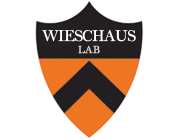Independent active and thermodynamic processes govern the nucleolus assembly in vivo.
Publication Year
2017
Type
Journal Article
Abstract
Membraneless organelles play a central role in the organization of protoplasm by concentrating macromolecules, which allows efficient cellular processes. Recent studies have shown that, in vitro, certain components in such organelles can assemble through phase separation. Inside the cell, however, such organelles are multicomponent, with numerous intermolecular interactions that can potentially affect the demixing properties of individual components. In addition, the organelles themselves are inherently active, and it is not clear how the active, energy-consuming processes that occur constantly within such organelles affect the phase separation behavior of the constituent macromolecules. Here, we examine the phase separation model for the formation of membraneless organelles in vivo by assessing the two features that collectively distinguish it from active assembly, namely temperature dependence and reversibility. We use a microfluidic device that allows accurate and rapid manipulation of temperature and examine the quantitative dynamics by which six different nucleolar proteins assemble into the nucleoli of Drosophila melanogaster embryos. Our results indicate that, although phase separation is the main mode of recruitment for four of the studied proteins, the assembly of the other two is irreversible and enhanced at higher temperatures, behaviors indicative of active recruitment to the nucleolus. These two subsets of components differ in their requirements for ribosomal DNA; the two actively assembling components fail to assemble in the absence of ribosomal DNA, whereas the thermodynamically driven components assemble but lose temporal and spatial precision.
Journal
Proc Natl Acad Sci U S A
Volume
114
Issue
6
Pages
1335-1340
Date Published
02/2017
ISSN Number
1091-6490
Alternate Journal
Proc. Natl. Acad. Sci. U.S.A.
PMID
28115706

